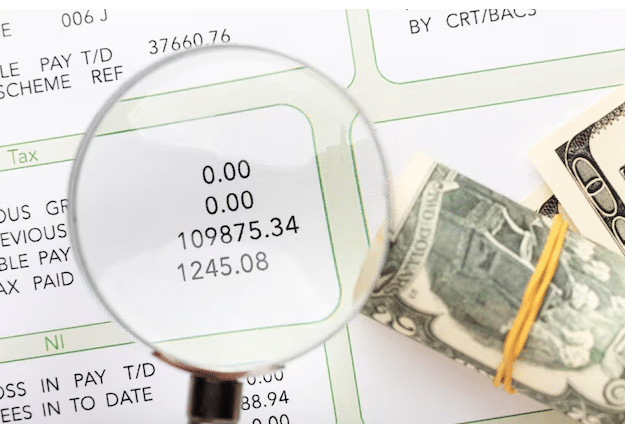Cryptocurrency tax in Australia is regulated by the Australian Taxation Office (ATO), which considers crypto assets as property subject to Capital Gains Tax (CGT).
Unlike traditional currency, cryptocurrency transactions require detailed reporting for tax purposes, with profits added to your assessable income.
The ATO has been increasingly vigilant in monitoring crypto activities since 2014, implementing data-matching programs with Australian exchanges.
Understanding your crypto tax obligations is essential, as non-compliance can result in significant penalties of up to 75% of unpaid tax plus interest charges.
So, let me help you simplify this process below. Let us get into it!
How Much Is Crypto Taxed In Australia? (Key Principles)
- Tax Rate: Crypto gains are taxed at your marginal income tax rate (0-45%, depending on your income bracket).
- 12-Month Discount: If you hold crypto for more than 12 months before disposal, you will receive a 50% CGT discount.
- Net Capital Gains: Calculated by subtracting your cost base from the proceeds when you dispose of crypto.
- Personal Use Assets: Crypto used solely for personal purchases under $10,000 may be exempt from CGT.
- Record Keeping: Detailed transaction records must be maintained for at least 5 years.
- Tax Year Reporting: All crypto activities must be reported in your tax return for the financial year (July 1-June 30)
- Crypto-to-Crypto Trades: Considered disposal events and subject to CGT calculations
- Mining and Staking: Income earned is taxable at market value when received
Understanding Cryptocurrency for Tax Purposes In Australia
The ATO defines cryptocurrency as a digital asset that uses cryptography for security and operates on decentralized networks based on blockchain technology.
Despite its name, the ATO does not treat cryptocurrency as actual currency but rather as a form of property or asset for tax purposes.

According to Tax Determination TD 2014/26, cryptocurrency is considered a CGT asset rather than money or foreign currency. This classification significantly impacts how it’s taxed.
Australian Taxation Office (ATO) Approach To Crypto
The ATO employs sophisticated data-matching technology to track cryptocurrency transactions.
Since 2019, the ATO has implemented a dedicated Cryptocurrency Data Matching Program that allows them to receive and analyze transaction data from Australian cryptocurrency exchanges and service providers.
The ATO has explicitly stated:

Let us look at how ATO data collection methods work and exchange information sharing work. The ATO receives complete data from exchanges, including:
- Transaction histories
- Deposit and withdrawal records
- KYC (Know Your Customer) information
- Personal details (name, address, DOB)
- Trading activities dating back to 2014
Additionally, All Australian exchanges must be registered with AUSTRAC (Australian Transaction Reports and Analysis Centre) and ASIC (Australian Securities and Investments Commission), making accessing this data straightforward for the ATO.


ATO Cryptocurrency Fact Sheet Key Points
The ATO‘s cryptocurrency fact sheet emphasizes:
1. Crypto is treated as property, not currency
The ATO classifies cryptocurrency as property (specifically a CGT asset), not as money or foreign currency. This distinction is important because:
- It means capital gains tax rules apply instead of foreign currency tax provisions
- You calculate gains and losses using property valuation methods
- The tax treatment is similar to shares or real estate, not like exchanging dollars for euros
- This classification affects every aspect of how your crypto is taxed
For example, if you bought 1 Bitcoin for $20,000 and it’s now worth $50,000, the ATO views this as owning appreciated property, not as holding foreign currency.

2. All disposals must be reported, regardless of profit or loss
Every time you “dispose” of cryptocurrency, you must report it on your tax return, even if you made a loss. All disposal events are discussed in depth below but a few disposals include:
- Selling crypto for AUD
- Trading one cryptocurrency for another
- Using crypto to buy goods or services
- Gifting crypto to someone else
Even if you lost money on a transaction, you must still report it. This is beneficial because capital losses can offset other capital gains, potentially reducing your overall tax bill.
3. Cost basis must include acquisition fees
Your “cost basis” is the amount you paid for cryptocurrency plus any directly related costs of acquisition.

These additional costs can include:
- Exchange fees (typically 0.1-1% of transaction value)
- Brokerage fees
- Wallet setup fees
- Transaction fees paid to miners/validators
For example, if you bought $10,000 of Ethereum and paid $150 in exchange fees, your cost basis would be $10,150. Including these fees reduces your taxable gain when you eventually sell.
4. Record-keeping is mandatory for all transactions
The ATO requires you to keep detailed records of all crypto transactions for at least 5 years. These records should include:
- Date and time of each transaction
- Australian dollar value at the time (even for crypto-to-crypto trades)
- Purpose of the transaction
- Details of the other party (even if just their wallet address)
- Transaction IDs or receipts
- Exchange or wallet information
- Calculation of capital gains or losses
Without these records, the ATO may assess your tax liability independently, which is likely to be higher than if you had proper documentation.
5. Different rules apply for businesses vs. individual investors
The tax treatment differs significantly between personal investors and businesses dealing with cryptocurrency:
For individuals (investors)
- Capital gains tax (CGT) treatment applies
- 50% CGT discount available for assets held over 12 months
- Limited deductions for costs
- Losses can only offset capital gains
For businesses
- Trading stock rules may apply
- Gains treated as ordinary income (no 50% discount)
- More expenses may be deductible
- Losses can potentially offset other business income
- GST considerations may apply
The ATO determines whether you’re an investor or a business based on factors like transaction frequency, organization, business plans, and commercial intent.
6. Special considerations for miners and traders
- The value of mined cryptocurrency is ordinary income at the time of receipt
- Mining equipment may be depreciable
- Electricity and other direct costs may be deductible
- If mining as a business, GST registration may be required
For traders (those the ATO considers to be in business):
- Cryptocurrency is treated as trading stock
- No 50% CGT discount applies, even for assets held over 12 months
- More record-keeping requirements
- Potentially eligible for business tax concessions
- Need to account for GST on applicable transactions
The key distinction is that miners and traders are generally considered to be running a business, while most individual crypto buyers and sellers are considered investors.

Warning from the ATO about non-compliance
The ATO has issued stern warnings about non-compliance with crypto tax obligations. It is clear they’re taking cryptocurrency taxation seriously, with potential penalties including:
- 25% shortfall penalty for failure to take reasonable care.
- 75% shortfall penalty for intentional disregard.
- General interest charges are currently at 7.89% per annum.
- Potential audits and amended assessments.
How Crypto Is Tracked Through Blockchain?
Cryptocurrency transactions are recorded on a decentralized digital ledger that maintains a permanent, tamper-proof record of all transactions.

While many believe cryptocurrency transactions are anonymous, they’re pseudonymous and traceable.
The blockchain records:
- Transaction amounts
- Wallet addresses involved
- Timestamps of transactions
- Transaction fees
This transparency means that when wallet addresses are linked to identities (which happens when you use Australian exchanges with KYC requirements), the ATO can trace transaction histories.
Why ATO Doesn’t Classify Crypto As Money Or Foreign Currency?
The ATO doesn’t classify cryptocurrency as money or foreign currency because:
- It’s not issued by a recognized monetary authority.
- It lacks legal tender status in Australia.
- It fails to meet stability requirements for currency.
- Its primary use case is often investment rather than a medium of exchange.
This classification as property rather than currency has significant tax implications, as it means the CGT regime applies rather than foreign currency tax provisions.
Crypto Tax Obligations in Australia
Capital Gains Tax applies to cryptocurrency in Australia whenever a “CGT event” occurs. What is a CGT Event, you ask? A CGT event happens when you:
- Sell cryptocurrency for fiat currency (e.g., AUD).
- Swap one cryptocurrency for another (e.g., BTC to ETH).
- Use cryptocurrency to purchase goods or services.
- Gift cryptocurrency to someone else.
I explain these in depth below.
The most common CGT event for crypto investors is when you dispose of your cryptocurrency.
The basic formula for calculating your capital gain or loss is:
Capital Gain/Loss = Capital Proceeds – Cost Base
Where:
- Capital Proceeds = the amount you received from disposing of your crypto
- Cost Base = what you paid for the crypto plus any acquisition costs
If the result is positive, you’ve made a capital gain; if negative, you’ve made a capital loss.
Taxable Cryptocurrency Events
You trigger a CGT event when you sell cryptocurrency for Australian dollars or any other fiat currency. You calculate your capital gain or loss by subtracting your cost base from the sale proceeds.
Example: You bought 1 Bitcoin for $10,000 in January 2023 and sold it for $60,000 in February 2025.
Capital Gain = $60,000 – $10,000 = $50,000
Since you held the Bitcoin for more than 12 months, you can apply the 50% CGT discount:
Taxable Capital Gain = $50,000 × 50% = $25,000
This $25,000 is added to your assessable income for the 2024-2025 financial year.
Trading between different cryptocurrencies
Trading one cryptocurrency for another is treated as if you sold the first cryptocurrency for AUD and then used that AUD to purchase the second cryptocurrency. You must calculate the capital gain or loss on the first cryptocurrency based on its AUD value at the time of the trade.
Example: You trade 1 Ethereum (ETH) worth $3,000 for Solana (SOL). You originally purchased the ETH for $1,500.
Capital Gain = $3,000 – $1,500 = $1,500
This $1,500 gain is subject to CGT, even though you never received AUD.
Using crypto to purchase goods or services
Using cryptocurrency to buy goods or services is also a disposal event for tax purposes. You must calculate the capital gain or loss based on the cryptocurrency’s AUD value at the time of the purchase.
However, there are exceptions, and there is a personal use asset exemption if:
- The cryptocurrency was acquired for less than $10,000
- It was used to purchase goods or services for personal use (not investment)
Gifting cryptocurrency
Gifting cryptocurrency is treated as a disposal at market value. Even though you don’t receive payment, the ATO considers you to have received the cryptocurrency’s market value at the time of the gift.
Example: You gift 0.5 Bitcoin worth $30,000 to a family member. You originally purchased this Bitcoin for $5,000.
Capital Gain = $30,000 – $5,000 = $25,000
This $25,000 is subject to CGT, even though you received no payment.
Earning crypto through mining, staking, or airdrops
Income earned from cryptocurrency mining, staking rewards, or airdrops is treated as ordinary income at the time of receipt, based on the market value of the cryptocurrency when you receive it.
This value also becomes your cost base for future CGT calculations when you dispose of these cryptocurrencies.
Do You Only Pay Tax On Crypto When You Cash Out Australia?
This is a common misconception.
You don’t need to convert cryptocurrency to Australian dollars to trigger a tax event. Any disposal of cryptocurrency, including trading one cryptocurrency for another, is a taxable event.
For example, if you trade Bitcoin for Ethereum, you must calculate the capital gain or loss on the Bitcoin based on its AUD value at the time of the trade, even though you never “cashed out” to AUD.
Record-Keeping Requirements For Crypto Transactions
The ATO mandates that you keep meticulous records of every crypto transaction for a minimum of 5 years. I’ll provide an example of how I organize these records for your reference.
These records should consist of the following components:
| Information to Record | Example |
|---|---|
| Date of transactions | March 15, 2024 |
| AUD value at the time of transaction | $50,000 |
| Purpose of transaction | Purchase of BTC |
| Who the transaction was with | Coinspot Exchange |
| Transaction receipts/IDs | 0x7d9f… |
| Exchange fees | $125 |
| Wallet addresses | 1A1zP1… |
| Cost base calculations | $50,125 (purchase + fees) |
Without proper records, the ATO assesses your tax liability, which could be significantly higher than the actual amount.
Wallet Transfers And Non-Taxable Events
Not all cryptocurrency activities trigger tax events. The following are generally not taxable events:
- Transferring cryptocurrency between wallets you own.
- Buying cryptocurrency with AUD or other fiat currency.
- Holding cryptocurrency (even if it increases in value).
- Converting cryptocurrency to stablecoins backed 1:1 by AUD (special case).
Important Note: While transferring between your own wallets isn’t taxable, you must maintain records proving ownership of both wallets. Otherwise, the ATO may assume you’ve disposed of your cryptocurrency.
Calculating Your Crypto Tax in Australia
Your cost base includes:
- The purchase price of the cryptocurrency
- Brokerage/exchange fees
- Transaction fees
- Wallet fees related to the acquisition
- Professional advice costs related to the acquisition
The capital proceeds are the amount you receive when you dispose of the cryptocurrency, less any fees directly related to the disposal.
Crypto tax calculator options
Several crypto tax calculators are available to help Australian investors calculate their tax obligations:
| Calculator | Features | Price Range |
|---|---|---|
| Koinly | Integration with 700+ exchanges, tax-loss harvesting | $49-$179 |
| CryptoTaxCalculator | Australian-focused, DeFi support | $49-$299 |
| CoinLedger | Simple interface, good for beginners | $49-$199 |
| CoinTracker | Portfolio tracking, tax reporting | $59-$199 |
| TokenTax | Complex transaction support, FIFO/LIFO methods | $65-$299 |
Software solutions for tracking transactions
Beyond tax calculators, these tools can help track your crypto transactions throughout the year:
- Portfolio trackers: CoinTracker, Delta, FTX (formerly Blockfolio)
- DeFi trackers: Zapper, DeBank, Zerion
- Excel templates: Available from various accounting services
Crypto Tax Australia reviews of different tools
Based on crypto tax Australia Reddit discussions and professional reviews:
Koinly: Highly regarded for its comprehensive exchange support and Australian tax compliance features. Users praise its intuitive interface and reasonable pricing.
CryptoTaxCalculator: Australian-developed solution with excellent support for local tax requirements. Particularly strong for DeFi users, though some users report occasional calculation errors with complex transactions.
CoinLedger: Simple interface makes it popular with beginners, but may lack some advanced features needed by power users. Good value for basic investors.
Comparison of popular tracking and calculation platforms
| Feature | Koinly | CryptoTaxCalculator | CoinLedger |
|---|---|---|---|
| ATO compliance | ✓✓✓ | ✓✓✓ | ✓✓ |
| Exchange integrations | 700+ | 400+ | 500+ |
| DeFi support | Good | Excellent | Basic |
| NFT support | Basic | Good | Limited |
| Tax-loss harvesting | Yes | Yes | Limited |
| Customer support | Email, Chat | Email, Chat | |
| Free plan available | Yes (limited) | No | No |
Capital gains and losses calculations
Australia allows several methods for calculating capital gains and losses:
- First In, First Out (FIFO): The first cryptocurrency you buy is the first one you sell
- Last In, First Out (LIFO): The last cryptocurrency you buy is the first one you sell
- Specific Identification: You specifically identify which units you’re selling
The ATO generally accepts FIFO as the default method, but you must be consistent in your approach across all your crypto assets.
Tax-Saving Strategies for Crypto Investors
First, strategy is one of the most significant tax advantages for crypto investors in Australia, and it is the 50% CGT discount. If you hold your cryptocurrency for more than 12 months before disposing of it, you’re eligible to reduce your capital gain by 50%.
Second, Tax loss harvesting involves strategically selling decreased-value cryptocurrencies to realize capital losses that can offset capital gains.
Example:
- You have a $10,000 capital gain from selling Bitcoin
- You have Ethereum that has decreased in value, with an unrealized loss of $6,000
- By selling the Ethereum, you can offset your Bitcoin gain
- Net taxable gain: $10,000 – $6,000 = $4,000
Important: The ATO has specific anti-avoidance provisions. You cannot sell cryptocurrency to realize a loss and then immediately buy it back (known as a “wash sale”).
Third, Donating cryptocurrency to registered charities can provide tax benefits:
- No CGT is payable on cryptocurrency donated to registered charities
- You may be eligible for a tax deduction for the market value of the donated cryptocurrency
This strategy allows you to avoid CGT while receiving a potential tax deduction.
Lastly, Since cryptocurrency gains are added to your assessable income and taxed at your marginal rate, timing your disposals to coincide with years when your other income is lower can result in significant tax savings.
Example:
- Your regular salary is $90,000 (tax rate: 37%)
- During a gap year with an income of only $35,000 (tax rate: 32.5%)
- Realizing $20,000 in crypto gains during the gap year saves you 4.5% in tax
Professional Help With Australia Crypto Taxes
Consider consulting a tax professional if:
- You have a large cryptocurrency portfolio (over $50,000).
- You’ve made numerous trades (more than 100 per year).
- You’re involved in DeFi, yield farming, or lending.
- You’ve participated in ICOs, airdrops, or hard forks.
- You mine cryptocurrency or run a crypto business.
- You’ve lost access to exchange records.
- The ATO is auditing you.
What To Look For In A Crypto-Knowledgeable Accountant
When selecting an accountant for crypto tax assistance, look for:
- Specific experience with cryptocurrency taxation
- Understanding of blockchain technology
- Familiarity with various crypto platforms and DeFi
- Up-to-date knowledge of ATO guidelines and rulings
- Experience with crypto tax software
- Professional qualifications (CPA, CA)
Red flags include accountants who:
- Suggest you don’t need to report crypto-to-crypto trades
- Aren’t familiar with terms like “DeFi,” “staking,” or “airdrops”
- Can’t explain how they would handle complex scenarios
Documentation To Prepare For Tax Time
Before meeting with a tax professional, prepare the following:
- Complete exchange transaction history (CSV exports).
- Wallet transaction records.
- DeFi platform activity.
- Records of cryptocurrency received as income.
- Details of any lost or stolen cryptocurrency.
- Previous crypto tax returns.
- Any correspondence with the ATO about cryptocurrency.
Cost Considerations For Professional Assistance
Professional crypto tax assistance costs vary based on complexity:
| Service Level | Typical Cost Range | What’s Included |
|---|---|---|
| Basic | $250-$500 | Standard tax return with simple crypto transactions |
| Intermediate | $500-$1,500 | Multiple exchanges, 100+ transactions |
| Complex | $1,500-$5,000+ | High-volume trading, DeFi, mining operations |
While these costs may seem high, consider them against the potential penalties for incorrect reporting and the time saved from doing complex calculations yourself.
Related Reads:
Conclusion: Crypto Tax In Australia Varies By Transaction Type
Crypto tax Australia compliance requires understanding that the ATO treats cryptocurrency as a CGT asset with all disposals triggering tax events (not just when converting to AUD).
The 50% CGT discount for assets held over 12 months offers significant tax advantages for long-term investors.
Please remember that Record-keeping is essential, as ATO data-matching means they likely already know about your crypto activities.
You will be charged penalties for non-compliance, which can reach 75% of unpaid tax plus interest. Professional assistance is recommended for portfolios exceeding $50,000 or with complex trading patterns.
With the above guide, you are now well-equipped. So, take action now to review your crypto activities and ensure compliance before the ATO contacts you.
FAQs
You can’t legally avoid crypto tax, but strategies like holding assets for 12+ months, tax-loss harvesting, donating crypto, and timing disposals in low-income years can minimize liability.
The ATO’s Data Matching Program collects transaction data from Australian exchanges. Blockchain transactions are publicly visible, and the ATO uses advanced tools to trace transactions across wallets.
All crypto disposals, regardless of value, must be reported. The ATO requires reporting all capital gains, losses, and income earned from cryptocurrency, even for small transactions.
Australian exchanges must report user data, including transactions and balances, to the ATO. International exchanges may not report directly, but the ATO shares data with global tax authorities.
Transferring between personal wallets isn’t taxable, but hiding disposals is illegal. Keeping records, using consistent accounting (FIFO/LIFO), and understanding taxable events help manage tax obligations legally.

![Crypto Tax Free Countries In 2025 [Updated List]](https://crypto.prosperityforamerica.org/wp-content/uploads/2025/03/Crypto-Tax-Free-Countries-1-1024x536.png)

![Top 15 Crypto Podcasts to Listen to in 2025 [Popular]](https://crypto.prosperityforamerica.org/wp-content/uploads/2025/03/Best-Podcasts-on-Cryptocurrency-1024x536.png)



